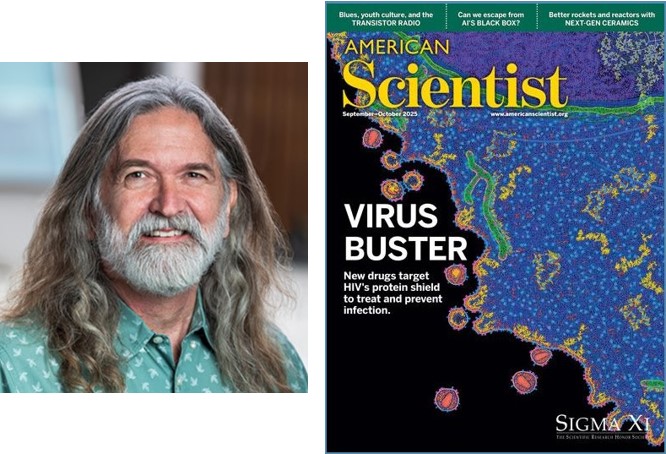News & Events
The Latest Buzz
Congratulations to David Goodsell, PhD! His illustration of HIV budding is published on the cover of American Scientist Magazine.

Please join us in celebrating the publishing of David’s beautiful artwork in the September-October 2025 issue of American Scientist.
September-October – 2025 – Volume: 113 – Number: 5 | American Scientist
Congratulations to Janet Iwasa, PhD, recipient of the 2025 ASCB Bruce Alberts Award for Excellence in Science Education

B-HIVE Center member Janet Iwasa was recently awarded the 2025 Bruce Alberts Award for Excellence in Science Education from the American Society for Cell Biology (ASCB)! This award is given to an individual who has demonstrated innovative and sustained contributions to science education, prioritizing the national impact of the nominee’s activities.
Congratulations, Janet!
Congratulations to Greg Voth, PhD, recipient of the 2025 ACS Award in Theoretical Chemistry
Please join us in congratulating Greg on this prestigious award!

We are delighted to share that Greg Voth, PhD, a Haig P. Papazian Distinguished Service Professor (Voth Group), Department of Chemistry, University of Chicago, has been awarded the American Chemical Society National Theoretical Chemistry Award for his groundbreaking work in field of computational chemistry.
Congratulations to this year’s CDP Awardee
We are pleased to announce that Charles Bou-Nader, PhD, an Assistant Professor (Bou-Nader Lab), Department of Biochemistry, at Emory University, is our CDP recipient for 2025-2026. Information on his proposed studies is below.

Molecular basis of HIV-1 integration at R-loop structures
The proposed work will define the fundamental principles of how HIV selects its integration sites on the genome to sustain a long-term infection. The overarching hypothesis is that non-B form DNA structures induced by nuclear RNAs are preferentially recognized by the intasome for integration. By combining biochemical, structural and biophysical approaches we will uncover new rules of integration paving the way for new antiretrovirals.



